Within a few days after the birth of the kids on their heads, and sometimes throughout the body, dense crusts begin to occur. They somewhat resemble seborrheic dermatitis and often cause alarm in young parents. Some babies have more these crusts, others have less, but they are present in absolutely all newborns. Therefore, the question of what the crusts are on the head of the newborn and how to get rid of them, worries many mothers. Let's figure out what serves the cause of the appearance of crusts and is it necessary to treat them?
Content
- How do seborrheic crusts look in newborns
- The mechanism of development of seborrheic crusts in newborns
- Yellow crusts in newborns - the causes of the appearance
- How to get rid of a crust in a newborn - safe methods
- How to prevent the appearance of milk crusts in a newborn
- Video "Broke on the head of the baby: how to remove?"
How do seborrheic crusts look in newborns
Dense scales are called milk crusts or a lullaby hat that merge with each other, forming a dense shell. Boxes can be painted in various shades - yellow, milk, silver, white. They are hard to the touch, firmly sit on the skin, and often involve the hair in their shell hat.
Scaly rashes are most often located on the head, namely in the area of \u200b\u200bthe crown, therefore they are often called dark crusts. But the appearance of a crust on the eyebrows in a newborn or in more inaccessible places, for example, behind the ears, in the nose, on the buttocks, is also not uncommon.
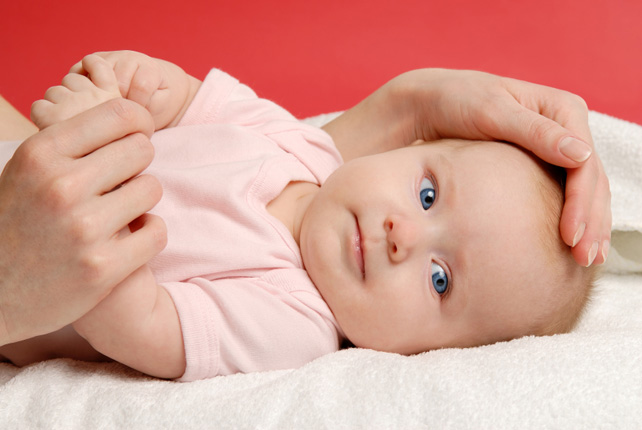
The mechanism of development of seborrheic crusts in newborns
The appearance of scales on the head is explained by an immature protective function of the skin, its increased sensitivity and not formed by resistance to external factors. The first few weeks after birth, the baby’s skin adapts to a new environment and actively produces a huge amount of fat. Some babies have a lot of it, others have less. In addition, skin fat can be produced by different parts of the body, so the localization of crusts in children can differ.
Milk crusts on the head of a newborn
In the newborn, the sweat glands are not fully formed, therefore, under the influence of androgens (sex hormones), they continue to develop after birth. This phase is accompanied by an increased secretion of their secret - fat. When the glands begin to work independently, a hormonal crisis occurs in the body as a result of liberation from androgens. This process lasts several weeks. Just during this period, the active formation of scales is observed. When a crust appears on the head of a newborn, one can notice other signs of this hormonal crisis - a small white rash on her face, the vaginal discharge in girls, peeling of the skin.
Depending on which microflora prevails on the skin of the baby, the color and structure of scales also differ. For example, in the presence of a large number of yeast fungi, scales gain a dense and strong structure, and if representatives of the intestinal flora prevail, they acquire a softer consistency, but the color becomes saturated yellow.
The clan scales tightly fit the skin of the baby, so they rarely leave on their own, but it is also difficult to remove them mechanically. If you do this incorrectly, the baby will have pain and microtrauma on the skin. But if they are not removed, crusts will be reflected, covered with a wax translucent ball resembling a fat seborrhea.
Milk crusts are easy to distinguish from skin diseases. They do not cause any discomfort in the baby: they do not itch, do not wet, do not blush. Up to a year, scales, as a rule, completely disappear, provided that the baby was provided with proper care. But there are exceptions, the scales code bother the baby until the age of three.
Important! Milk crusts in a baby are not a disease, but rather, on the contrary, are considered a normal physiological phenomenon. It does not need treatment, but careful care for delicate skin of crumbs is necessary.
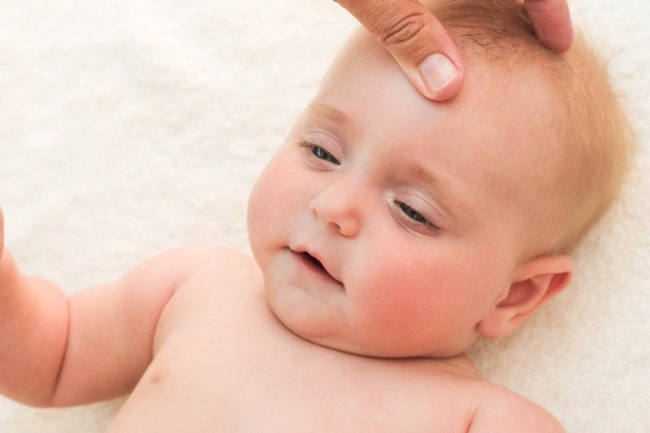
Crusts in the nose of a newborn
Often, newborn children face a problem such as difficulty breathing. The reason for this is crust in the nose. Since their structure is as dense as the scales on the head, with the help of sneezing, cannot be rid of them.
To help the baby restore full breathing, it is enough to process the nasal passages with a cotton swab moistened in any vegetable oil. When the scales are soaked, the baby will easily get rid of them.
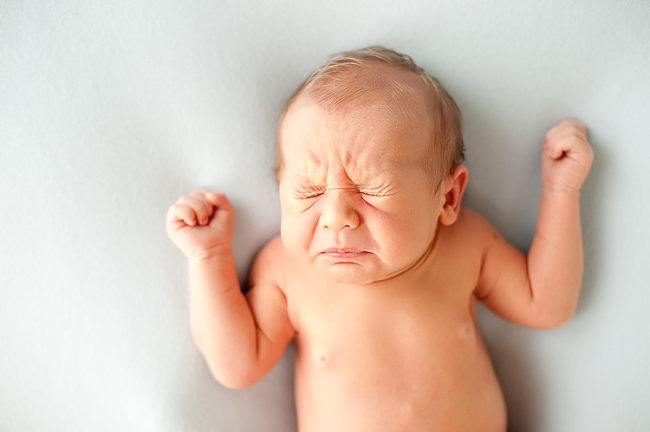
Crusts on the face of a newborn
Boxes on the face are a typical seborrheic rash in babies. Scales affect the entire hair on the face (eyebrows) or other areas, including the neck. Often they acquire a milk, brown or yellow tint.
The scales on the face are no different from the same rashes on the head. But they create more difficulties in the process of removing them. The fact is that the rough separation of scales can leave scars on the face, so they need to be removed gradually, without applying strong efforts. In most cases, crusts independently fall off the skin of the face with regular washing the baby with water.
Interesting! There is an opinion that a large number of crusts on the head prevents the full hair growth. In fact, milk crusts do not affect this process.
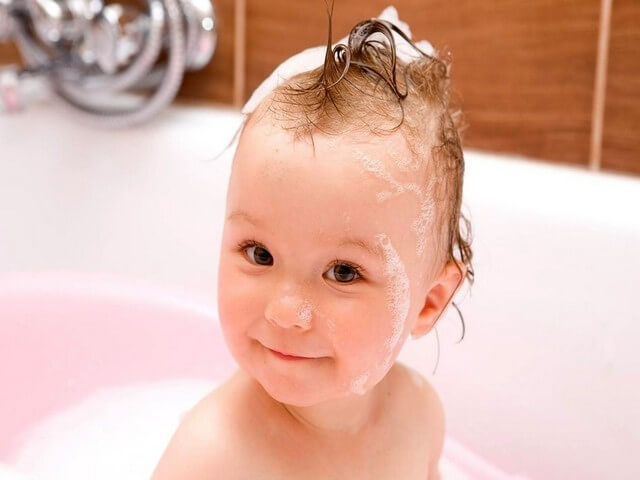
Crusts behind the ears of the newborn
In the newborn, crusts are observed behind the ears up to a year. They are actively peeling, they can hardly harden, often give out an unpleasant odor. The kid is often worried about these crusts, because they can scratch hard.
They are easily removed after swimming if they manage to get wet enough. At the same time, the baby does not feel discomfort, and the skin is not injured. Scales appear behind the ears and at a more mature age, in the case of insufficient hygienic care in this zone.
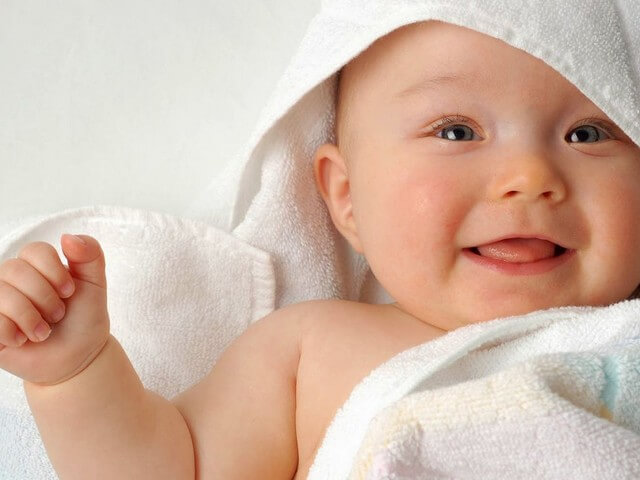
Yellow crusts in newborns - the causes of the appearance
In addition to immaturity of the protective properties of the skin, crust in the baby can be caused by a high concentration of female hormones responsible for the secretion of the sebaceous glands. This factor exhausts itself closer to 8 months of life.
As mentioned above, crusts are a normal stage in the development of a small organism. But the number of scales and the duration of their stay on the skin can be aggravated for a number of reasons, including insufficient skin care, the influence of an allergic factor, the wrong daily routine. Here are some of these reasons:
- Overheat. Wrapening the baby or too high air temperature in the children's room leads to increased sweating. The load on the unstable function of the sebaceous glands enhances the formation of scales throughout the body.
- Too frequent washing with shampoo. Excessive contact of delicate scalp with water and hair washing products lead to dryness and, as a result, to increased secretion of glands. This significantly increases the number of crusts on the forehead, the head of the newborn. Exclusion from the rules: regular washing the head is necessary if the baby often sweats during sleep or feeding.
- Inappropriate cosmetic body for body (foam, shampoo, cream). The baby needs to choose the right body care products with a neutral PH level and a natural composition. Adult shampoos, solid (including children's) soap, creams are not suitable. They disrupt the acid level of mucous membranes, promote dry skin, cause irritation or allergies.
- Allergy. The infant immune system is very unstable, so in response to any irritant an allergic answer can manifest. Washing powder, synthetic tissue, food allergens in breast milk, diapers - all this can contribute to a more extensive damage to the skin with milk "flakes".
Important! Take a closer look at the baby. If crusts are actively spreading throughout the body, cause discomfort to the child, crack or release liquid, the development of atypic dermatitis should be excluded.

How to get rid of a crust in a newborn - safe methods
By the year, scaly formations in the baby disappear independently, but this process is very long. In addition, the children's head does not look very aesthetically pleasing with such a shell. Therefore, parents try to help the baby get rid of such a cosmetic flaw. In order not to harm the baby, it is important to know how to remove crusts from a newborn.
Mechanical method for removing tanned crusts
The most affordable and simple way to get rid of crusts is their removal mechanically. You can do this in two ways.
In the first case, crusts are removed after bathing the baby. The scalp of the head and body is steamed in warm water. After that, crusts easily move away and “roll” under my mother’s fingers. Such an event should only be washed with your hands, this must be done carefully so as not to damage the baby's delicate skin. The remains of crusts stuck in the hair can be removed with a soft brush when the head is completely dry.
The second option also helps to remove scales well, especially if there are too many of them. The crusts are pre -softened with oil, and then combed.
How to comb the crust in a newborn:
- On the skin affected by seborrheic crusts, vegetable oil intended for babies, or pharmacy petroleum jelly is applied.
- Then a cotton hat is put on the head. It is better to use the old thing, because it will be very contaminated with oil.
- After 20-30 minutes, when the crusts are already soaked well, the hair is washed with shampoo using a soft brush.
- When the hair is dry, the remains of scales are combed with a scallop with rounded teeth.
Crusts, after such a procedure, it is very easy to disappear without injuring the skin. Such skin treatment is recommended to be carried out 2-3 times a week, and on the rest of the days, wash your hair with simple water without any means.
Important! You can’t remove the non -steamed scales. This leads to damage to the skin, penetration of infection, inflammation. In addition, in the place where there was a scales, a bleeding wound can occur, leaving behind a scar.
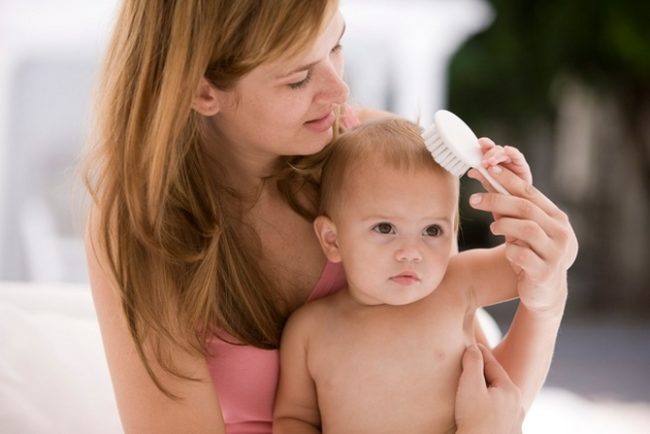
Removing crusts in newborns using professional means
If the baby has quite a few crusts that cover the entire head, foreheads and other parts of the body, pediatricians advise using special products against seborrheic crusts. Dermatological foams, cleansing gels, shampoos are found on sale. Some funds are applied before swimming, others are left overnight.
Consider the most effective products from milk crusts.
- BabyBorn oil with a cleansing effect of the pharmaceutical company Elf. The product is produced in the form of a liquid oil solution of orange. It is contained in a convenient bottle with a dispenser (volume - 25 ml). On the package it is indicated that this oil is hypoallergenic, does not cause irritation, does not contain preservatives and aromatic substances, there are also no dyes. The main substance is almond oil (about 90%). The composition contains calendula oil, sea buckthorn, grapes, as well as tocopherol. Using the oil is very simple: you need to apply the product to scales, wait 15-25 minutes, and then carefully comb them with a scallop. Oil can also be used to moisturize children's skin or for massage.
- Cerato-regulatory tool of Mustel for newborns from crusts. On sale there is a cream and foam-shampoo. Both funds can also be used for children at an older age. Mustel cream Stelker has a light low -fat structure, which leaves no traces on clothes. There are no dyes, preservatives, fragrances. The action of the product is aimed not only at the removal of mammary crusts, but also at the regulation of the sebaceous glands. The composition contains aloe vera, glycerin, panthenol, avocado oil and other substances. The cream is contained in a tube of 40 ml. It is applied to crusts, left for the whole night, then washed off with shampoo. The mustel shampoo has a formula without tears, contains fruit extract, can be used both for removal of crusts, and as an ordinary children's shampoo with a moisturizing effect.
- Emulsion from seborrheic scales D.S. Uriage. Another remedy for a French manufacturer for newborns, as well as children and adults. Emulsion Uryazh D.S. It does not cause allergic reactions, it does not have parabens, a fragrance. The product actively moisturizes the skin, without clogging the pores with fatty substances, shows an anti -inflammatory effect. The emulsion is shown to remove milk crusts or rashes with seborrheic dermatitis. It is applied at night, washed off with shampoo in the morning.
- Shampoo for newborns from A-Derma Primalba crusts. The product carefully cleanses the scalp, softens scales, relieves itching. The composition contains oats, glycerin, olive oil, castor oil. Shampoo is in a comfortable bottle. Before use, you need to squeeze out a little product on the palm of your hand, and then apply it to dry scalp for 5-10 minutes before bathing. Then the shampoo should be washed off with warm water. The manufacturer recommends repeating the procedure daily until the crust is completely released.
- Oil gel from seborrheic crusts "Our mother". The product moisturizes the skin well, removes scales, promotes active hair growth. The gel is available in the form of ampoules. The composition contains bisabolol, vitamin f and a, teaser -tree broadcasts, red oil, soy oil, tocopherol. To process crusts, you need to open one ampoule, apply its contents to scales, wash it off after 5-10 minutes.
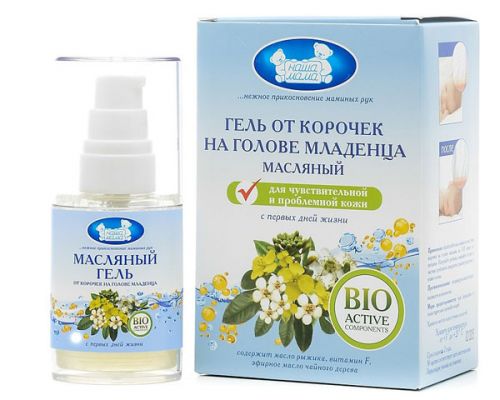
How to prevent the appearance of milk crusts in a newborn
Doctors assure that seborrheic crusts are harmless phenomenon and does not harm children's health. Therefore, it is necessary to regard it not as a pathology that needs to be treated, but as an individual feature of a newborn baby. The only thing that is required of parents is regular and careful skin care, followed by combing the crusts, as well as the prevention of their repeated occurrence.
Here's what the pediatricians advise young mothers for the prevention of a lullaby hat:
- Avoid overheating. Do not put on a lot of clothes on the baby, especially in a warm room, do not use hats with a synthetic composition.
- Try to maintain a sufficient level of humidity in the room. If you have central heating at home, use air humidifier in the winter season.
- Wash your head and body correctly. Use shampoo no more than 1 time per week. It is also worth limiting the use of foam or soap for the skin-a newborn baby can be washed in boiled water, and soap is used 2-3 times a week.
- For the head, buy a comb made of natural materials. Even if there are no hairs yet, with soft villi you can do a massage of the head to improve blood circulation. This accelerates the adaptation process in the sebaceous glands.
- Follow the rules of children's hygiene. It is important to buy a baby daily, especially if the baby sweats a lot.
Dairy crusts are a normal and quickly passing phenomenon during the period of newborn. But given the ugly appearance and unpleasant smell, mothers try to quickly get rid of crusts. But this must be done slowly and carefully so as not to harm your baby.









Comments
a couple of years ago, there was no side of metrogils from the same problem, there were no side effects ...
I’m not a fan of peeling at all, it saves from acne of metrogil, it also smoothes it ...
Great article! ...
I take the second course of the Capsules Climafite 911. The tides went very quickly. It became calmer, irritability went away and I sleep well ...
i also noticed - it is worth nervous, everything immediately affects the face. Therefore, I try to avoid conflicts and unpleasant people. Of the creams, I like Miaflow from wrinkles - smoothes not only small wrinkles ...